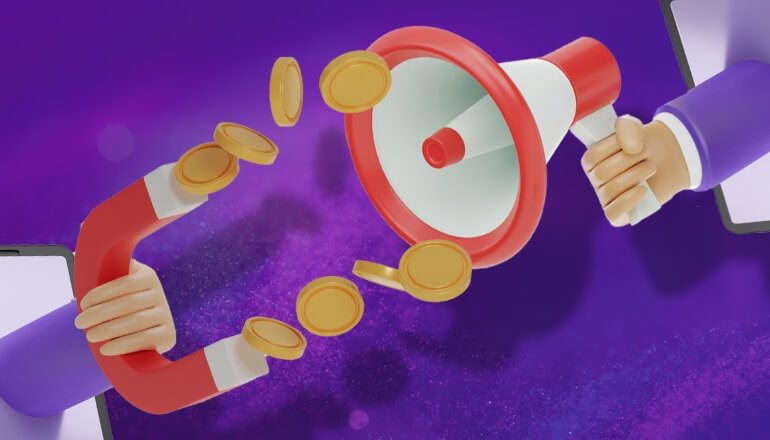
What is B2B Marketing? Well, let’s agree on definitions before I make my point that B2B marketing should include both inbound marketing and outbound sales.
My definition of inbound is reaching out to buyers who showed some level of interest in our product.
Outbound sales, AKA “cold calling,” is initiated by a salesperson reaching out to a potentially relevant buyer.
Now that we’re square on words, let’s put some myths to bed.
Myth #1: Outbound is Dead
Ring. Ring. Could it be my future. . . “Hello?”
“Hi Mr. Nalevka. I’d like to sell you a new —.”
Outbound sales can be really annoying to the receiver (as well as to the SDR). We are not expecting the call, not prepared for the call, and unless the SDR on the other end of the line knows how to make me want what he’s selling, we don’t want the call.
But if you are a company launching a new product or service, you can’t sit and wait for buyers to come to you. Even if you already have a flow of inbound leads, you can’t risk not doing outbound.
Pick any company you think does inbound really well, and I promise you they are also doing outbound (even HubSpot). Hint…Outbound sales get easier when the company has effective inbound marketing.
Myth #2: Inbound = Collecting Emails
The goal of inbound marketing is not about getting people to download your content in exchange for their email addresses with the intention of bombarding them until they either buy or unsubscribe. (Read our blog: Why Inbound Marketing is Just Like Dating.) Inbound is about providing valuable information - content - at the right time.
Leads move through the funnel at their own pace as they consume the content, become more informed, and grow more attached to your company. Of course, there are ways to grease the funnel to help leads go from start to (hopefully) finish faster, but that’s for another blog—or conversation (hint, hint).
Myth #3: Inbound Sales are for Lazy People
I can attest to the fact that inbound is highly automated—but it takes a lot of work. There’s research and writing and designing and testing and rewriting and redesigning and testing to get it to, “Look Ma, no hands!”
And when we finally reach this point where the assets are working on their own and bringing in leads, it’s time to start the next project. But we still have to maintain the first.
It’s like the performer at the circus who keeps the plates spinning. I don’t think you could call him lazy. Same with inbound—it’s about keeping all the assets working optimally.
Understanding the Inbound Buying Process
To grasp the concept, let's approach it from the perspective of the entire buying process—a shift that, as numerous sources have highlighted, has undergone a fundamental transformation.
Nowadays, buyers are inclined to amass knowledge before starting a conversation with a salesperson. The extent of information sought before initiating a purchase conversation hinges on the product's complexity. Buyers anticipate access to virtually all the details necessary to facilitate their decision-making, including:
- Matching the features they need versus what is actually offered
- Weighing competitive options and making comparisons
- Evaluating the cost of ownership - the initial price plus any additional costs to implement and support the product
In fact, many won’t even start a conversation with your company if they can’t at least get some understanding of this on their own.
Understanding the Sales Representative's Role
The sales individual (I know you are wondering where they fit in) must seamlessly integrate into this process, demanding a distinctive playbook. If you're utilizing HubSpot, take a look at this blog about HubSpot playbooks for insights.
As a rule of thumb, the more complex the solution, the more help a buyer may need from a salesperson. The salesperson’s role is to help and sometimes nudge the buyer through the sales process. But the only way the salesperson should insert themselves into the process is if they add value. Specifically, they need to be able to provide information and insights the buyer cannot get online.
Here’s an example: A CMO knows she needs marketing automation and wants to assess HubSpot, SFDC, and Marketo, but she is not sure which versions she would need or how to compare them with their specific requirements.
A smart salesperson can identify where she is in the buying process and help her with answers to the specific questions she has—based on a pre-developed playbook plus various types of content.
Thus, the salesperson slides her through the end of the funnel to the finish line.
The Sales Representative's Goal
Once the salesperson is able to become a trusted advisor, he or she can help the buyer through their process, highlighting (as unbiased as possible) the advantages (and disadvantages) of your solution.
If you want further clarification on any of the above, reach out. I’d be happy to talk to you.

by Perry Nalevka on August 31, 2023
CEO of Penguin Strategies





